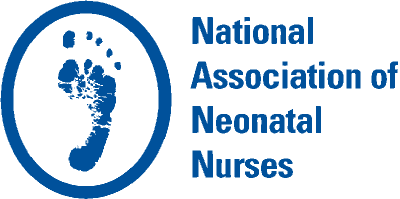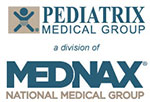Feature
Bathing in the NICU Population
Laura Selway, MSN RN PCNS-BC
Individual bathing customs are behaviors that develop into parenting routines after a baby is born (Adejuyigbe et al., 2015). The new parents’ preconceptions of cleanliness are challenged when a newborn is admitted to the neonatal intensive care unit (NICU) and bathing is delayed because of clinical instability. As the infant begins to show signs of improvement, parents may struggle with the concept of not bathing. Bathing neonates in the NICU environment can have physiologic effects. Educating staff and families on how cold stress affects the infant’s disease state and overall well-being is crucial.
The World Health Organization (WHO) recommends that infants born without complication spend the first hour of life skin-to-skin with their mothers to prevent hypothermia and promote breastfeeding. Positioning the infant skin-to-skin with the mother creates a natural warming system at a time when the infant is at high risk for evaporative and conductive heat loss. Vernix caseosa, the lipid-based coating of a term infant’s skin, is known to aid in regulating body temperature (Adejuyigbe et al., 2015; Coldwell, 2015; World Health Organization, 2013). The WHO also recommends that an infant’s first bath be delayed until after 24 hours of life. If the bath cannot be delayed for cultural reasons, a minimum delay of 6 hours is recommended (Adejuyigbe et al., 2015; WHO, 2013).
Infants who are admitted to the NICU do not receive beneficial skin-to-skin contact with their mother. Regardless of diagnosis, infants are separated from their mothers to receive life-sustaining care in the NICU. Thermoregulation is supplemented with the use of incubators, warmers, chemical thermal mattresses, and increased room temperatures. There are no clear guidelines on bathing timelines and recommendations for NICU infants. It is difficult to create a recommendation when the diverse NICU patient population varies from a 24-week neonate with friable skin to a postdate neonate oscillating with persistent pulmonary hypertension. Exploring the effects of cold stress associated with bathing may guide clinicians in their decision to bathe or not bathe the NICU patient.
An organized, physiologic chain reaction is set off when an infant becomes cold stressed. A normal body temperature (36.5–37.2 degrees Celsius) in the infant population is a very narrow index. Most infants live within a 1–1.5 degrees Celsius temperature range (Karlsen, 2013). As the infant’s temperature decreases, he or she will attempt to minimize heat loss while also attempting to increase heat production. Peripheral vasoconstriction is a direct reaction from skin receptors that sense a decrease in body temperature. These receptors send signals to the hypothalamus to release norepinephrine, resulting in vasoconstriction. The infant’s arms and legs will divert blood back to the core, and the infant will attempt to decrease surface area by flexion of the arms and legs. In order to produce heat, the infant’s motor activity also many increase and the infant will begin to metabolize brown fat. All of these activities require extra oxygen and glucose in order to activate and sustain the chain reaction to conserve and produce heat (Coldwell, 2015; Karlsen, 2013).
Premature infants are more sensitive to temperature fluctuations and experience cold stress more quickly than infants born closer to term (Coldwell, 2015; Karlsen, 2013). Infants with sepsis, respiratory distress, hypoxia, and shock may experience the negative effects of hypothermia more quickly and more severely. For NICU patients, the natural mechanisms used to minimize heat loss may not be as developed compared to those of term, healthy infants. Flexion of the extremities may not be possible due to central nervous system immaturity. Brown fat is formed and deposited in the neonate’s body in the last weeks of pregnancy. Therefore, premature infants will have inadequate brown fat stores required to create heat. For term NICU patients with adequate brown fat stores, hypoxia will inhibit brown fat metabolism and neutralize its potential to create heat (Karlsen, 2013). Infants with sepsis, respiratory distress, hypoxia, and shock all have greater glucose utilization needs without adding cold stress related to bathing (Karlsen, 2013).
Cold stress not only affects peripheral vasoconstriction, it also negatively affects the pulmonary vasculature of the NICU infant. In the first days of life, the term, healthy infant experiences a decrease in pulmonary vascular resistance (PVR) to allow blood to flow to the lungs as the infant transitions to extra-uterine life. A pressure gradient is essential for deoxygenated blood to travel to the lungs before being transported via the left side of the heart to perfuse the body. Infants admitted to the NICU often experience a delay in the shift of pressures within the body compared to the pressures within the lungs. Intrauterine bypasses, such as the patent ductus arteriosus (PDA) and patent foramen ovale (PFO), may open and close based on the pressure gradients within the heart and lungs. When norepinephrine is released in the infant’s body due to cold stress, prolonged peripheral vasoconstriction will impair tissue perfusion and oxygenation. Over time, those tissues will convert to anaerobic metabolism, producing lactic acid and contributing to an acidotic state. Acidosis will then increase pulmonary vasoconstriction and right-to-left shunting through the PDA (Karlsen, 2013). Norepinephrine also directly signals the pulmonary blood vessels to constrict and increase the PVR. The infant will begin shunting deoxygenated blood through the PDA and perfusing his or her body with deoxygenated blood, thus creating a hypoxemic state (Coldwell, 2015; Karlsen, 2013).
As the infant’s health begins to improve, the NICU clinician and family may ask, “Is now the right time for the infant to be bathed?” Often, the NICU clinician forms a bias from positive or negative bathing experiences that affect the care provided to the neonate (Coldwell, 2015). The NICU’s unit culture also might contribute to a clinician feeling as though the infant must be bathed before a set time has passed. In practice, this translates to bathing a new infant before the next shift arrives or bathing infants only on night shift. The most important factor in determining the timing of a bath is the infant’s ability to tolerate the effects of the bath. NICU clinicians can use radiant overhead warmers with servo-control to minimize the effects of cold stress for the infant and restore the infant to a normal temperature post-bath (Coldwell, 2015). Calming techniques, such as swaddled bathing, also will help the infant tolerate the process better and conserve heat and glucose expenditure (Coldwell, 2015). Limiting the amount of time that the infant is wet and cold during the bath is an important teaching point for parents (Coldwell, 2015). NICU clinicians can help parents understand how much energy is required to maintain warmth and partner together in a conservative bathing approach for their infant.
Bathing an infant in the NICU is a stressful experience for an already stressed infant. Whether the admitting diagnosis is prematurity, cardiac disease, or respiratory illness, the infant will have increased glucose and oxygen needs that will be exacerbated by the bathing process. Norepinephrine can increase pulmonary vasoconstriction and worsen respiratory disease states. Even excessive crying associated with a bath can be detrimental to the infant and reverse progress made during the NICU hospitalization. The NICU clinician can be sensitive to parents' desires for cleanliness and also advocate for their patient through education on the effects of cold stress for the infant. The judgment to bathe an infant always should be a conscientious, well-informed decision for the baby and family.
References
Adejuyigbe, E. A., Bee, M. H., Amare, Y., Omotara, B. A., Iganus, R. B., Manzi, F., . . . Hill, Z. E. (2015). “Why not bathe the baby today?” A qualitative study of thermal care beliefs and practices in four African sites. BMC Pediatrics, 15(156).
Coldwell, A. (2015). To bathe or not to bathe: The neonatal question. Neonatal Network, 34(4),216–219.
Karlsen, K. (2013). The S.T.A.B.L.E. program (6th ed.). Park City, Utah: American Academy of Pediatrics.
World Health Organization, (2013). WHO recommendations on postnatal Care of the mother and newborn. Retrieved from http://www.who.int/maternal_child_adolescent/documents/postnatal-care-recommendations/en/.


